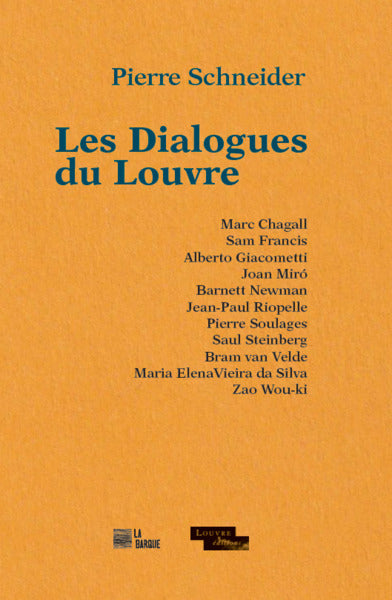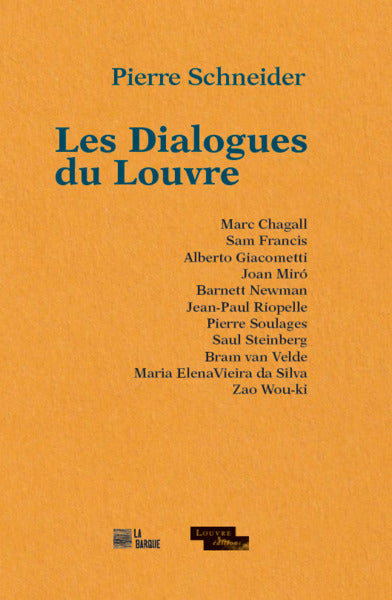Les dialogues du Louvre
- Authors: De (auteur) Pierre Schneider
- Publishers: BOAT
- Date of Publication: 2023-11-03
- Pages: 288
- Dimensions: 222mm x 146mm
The dialogues from the Louvre Chagal, Sam Francis, Giacometti, Miró, Newman, Riopelle,
Soulages, Steinberg, Bram van Velde, Vieira da Silva, Zao Woo-Ki A co-edition
La Barque, Le Louvre Illustrated work with works by the artists present and
paintings summoned in the dialogues. Writer, art critic..., Pierre
Schneider (1925-2013), as he himself defined his approach, was a
essayist, "with the freedom - but also the risks - that this genre
indefinable behavior." It is also that, having had to flee as a young man
Nazi Germany to the United States ("in America" the author said) in
passing through France, which he was also forced to flee, he had "ceased
to be restricted by the limits of a frontier", including therefore those of a
well-defined genre. So he tried, by broadening his convictions as
his knowledge, "to escape the somewhat paralyzing specialization", and
to break down the barriers between art and the history of ideas. He also opened up "the nature of
look at art", as here with this book, by the very fact of welcoming
friendly words from some of the most important artists of the
second half of the 20th century with whom he had gone to the Louvre, making
and giving a "living" portrait of each of them on this occasion: Chagal, Sam
Francis, Giacometti, Miró, Newman, Riopelle, Soulages, Steinberg, Bram van
Velde, Vieira da Silva, Zao Woo-Ki — each of whom he was a contemporary, and
among which were some of his friends (Riopelle or Sam Francis
notably, but also Bram van Velde), chosen "among those who seemed to [him]
sufficiently at odds with established opinion and knowledge not to be
predictable." "It was, he specified, at most, a hope."
Restitution of "a universe swallowed up in silence", each of these dialogues has
therefore took place at the Louvre Museum, "on the same background of significance". For
As such, it is not a book of interviews in the strict sense, but, recalling
Mandelstam's Dante, from an approach combining the interview itself with the essay.
Thus the testimony rubs shoulders with interpretation or commentary, like the
past the present... A way for the author of an important monograph on Matisse,
the fruit of a long period of work, to continue with this book of dialogues his
inner conversation, as one would say of an inner experience, with art.
Share

